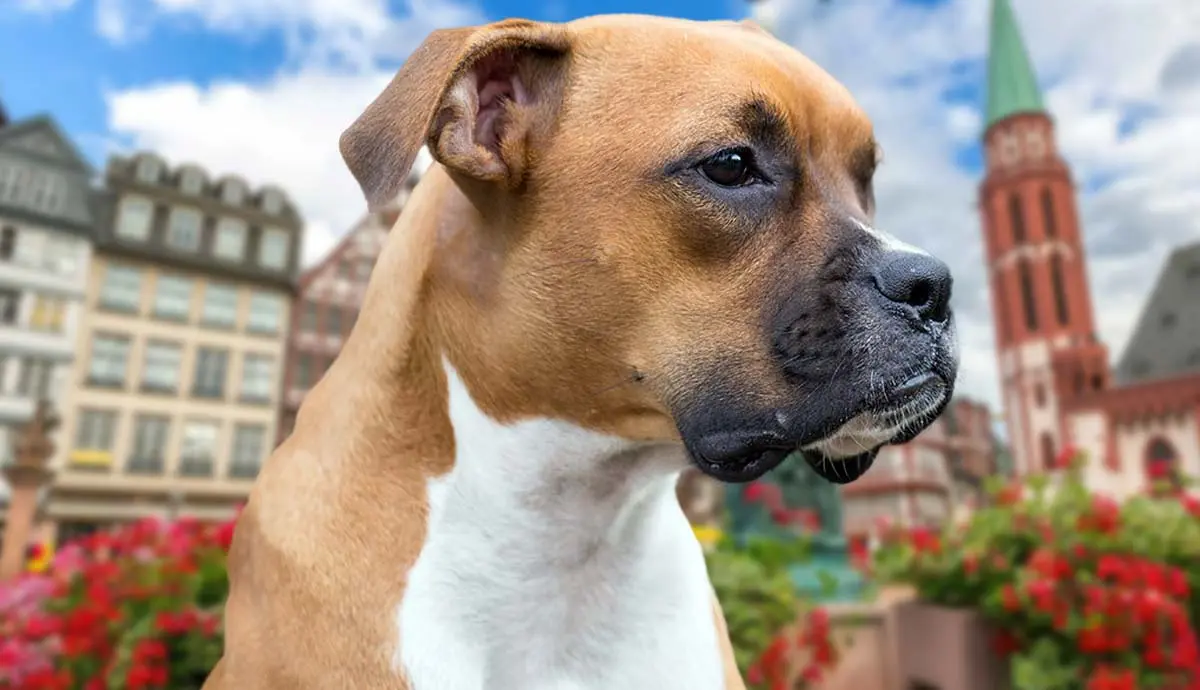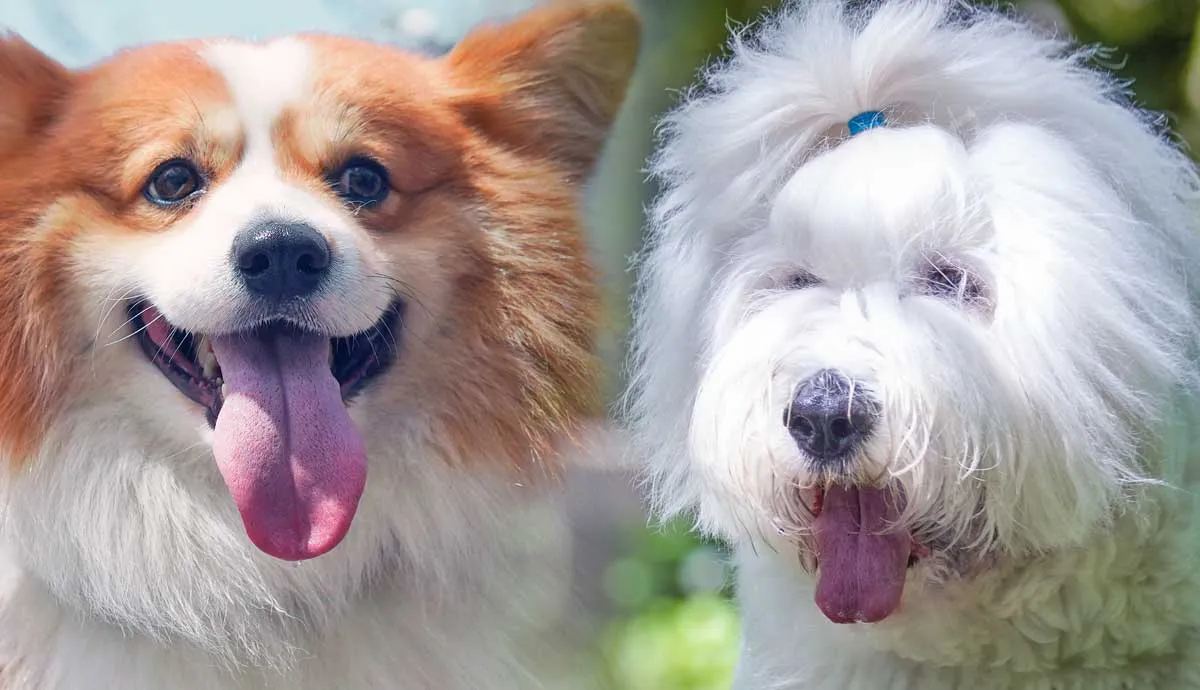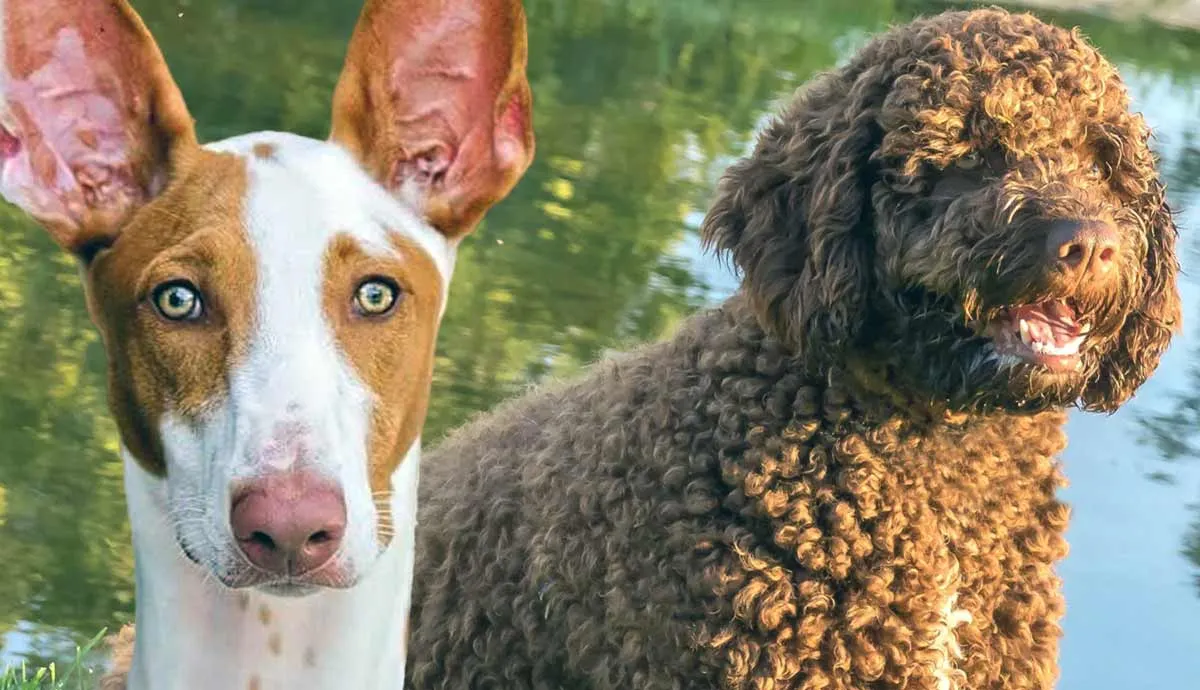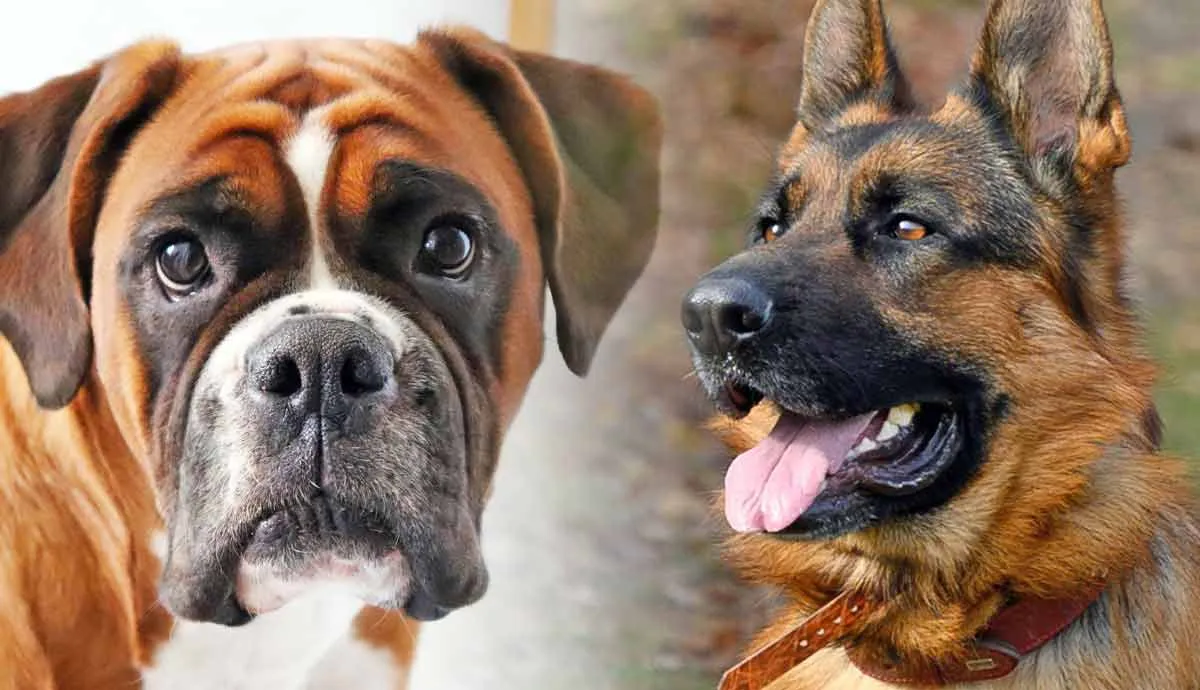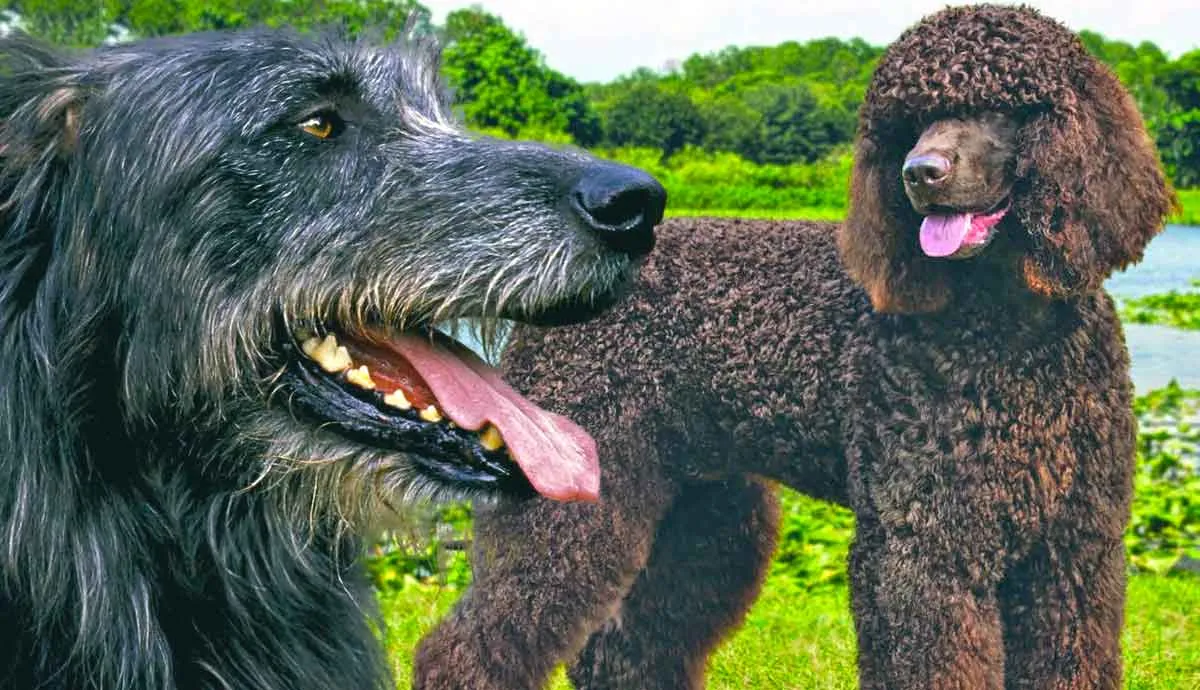The exact origin of the Boxer breed's name is unknown, but historians have several theories about where the name came from. There are three major theories, with the most popular being that the word “Boxer” came from a German word related to slaughterhouses. These strong dogs were used to keep cattle in line before they were processed. Today, however, these family-oriented dogs are known for their fun-loving nature.
Read on to learn more about where Boxers get their names and more fun facts about the breed.
What’s in a Name: Boxer Name History
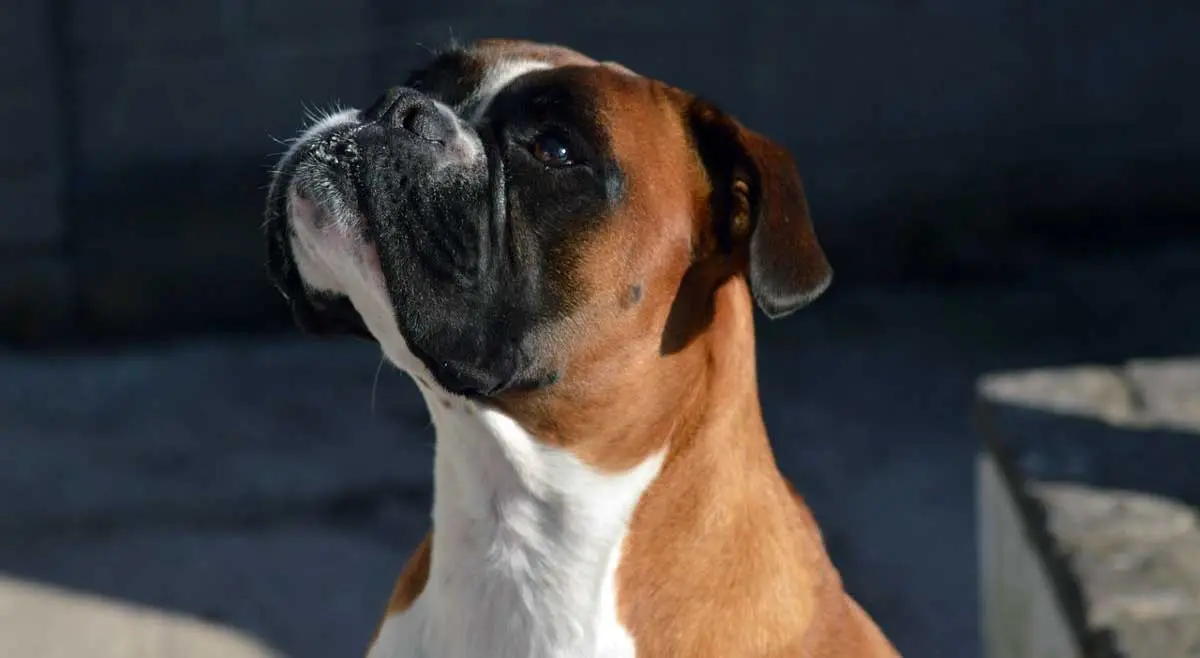
The Boxer is a descendant of an extinct breed called the Bullenbeisser, which was a cross between a mastiff and bulldog, possibly with some Great Dane and terrier mixed in. Boxers originate from Germany where the dogs were used for bull baiting. They helped butchers by controlling cattle in slaughterhouses.
As noted, it's the slaughterhouse where many historians believe the Boxer got his name. “Boxl” was a German word for the dog’s slaughterhouse designation. This may have eventually morphed into the English word “Boxer.” Yet, Boxer fanciers believe the name comes from the dog’s habit of using their powerful forepaws to play. An excited Boxer might stand on its hind legs and bat the air with its paws—hence the namesake.
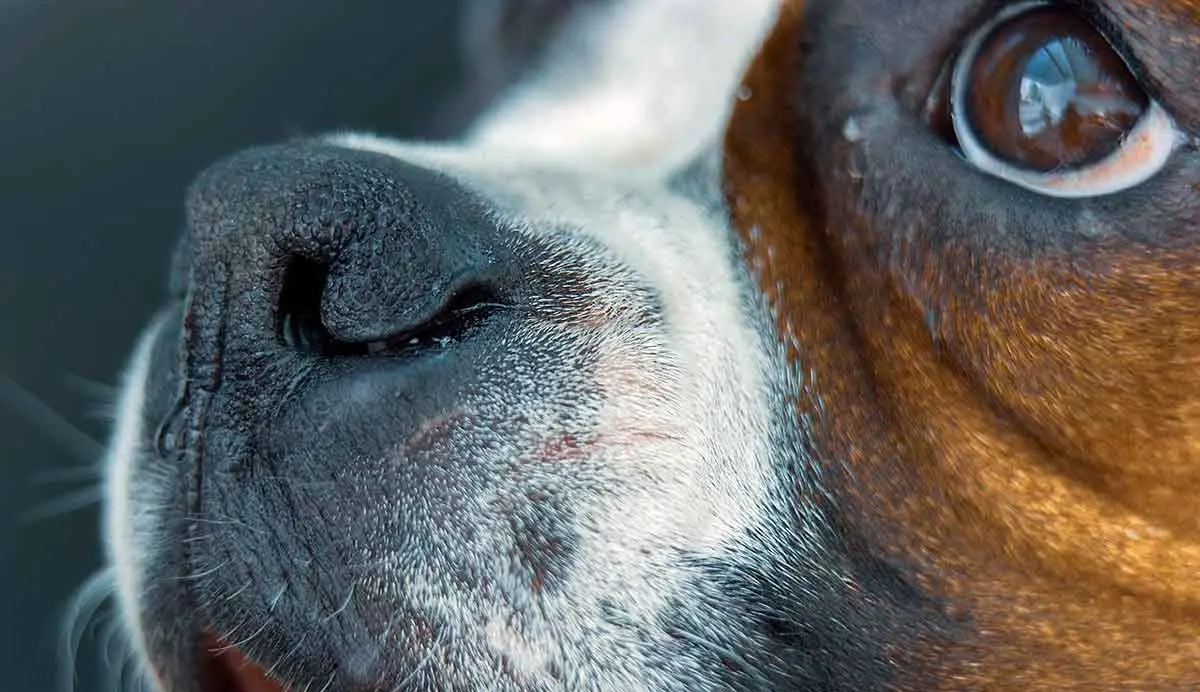
Here’s another theory. In Munich, there was a breed similar to the modern Boxer that was also a descendant of the Bullenbeisser. It was called a BierBoxer. Boxer may have been a shortening of that name to refer to this stocky, muscular, and powerful new breed.
The final theory is that “Boxer” was a common name for dogs during the 19th century when this breed became established, which may have contributed to this breed’s name.
Boxers Stem from Ancient Breeds
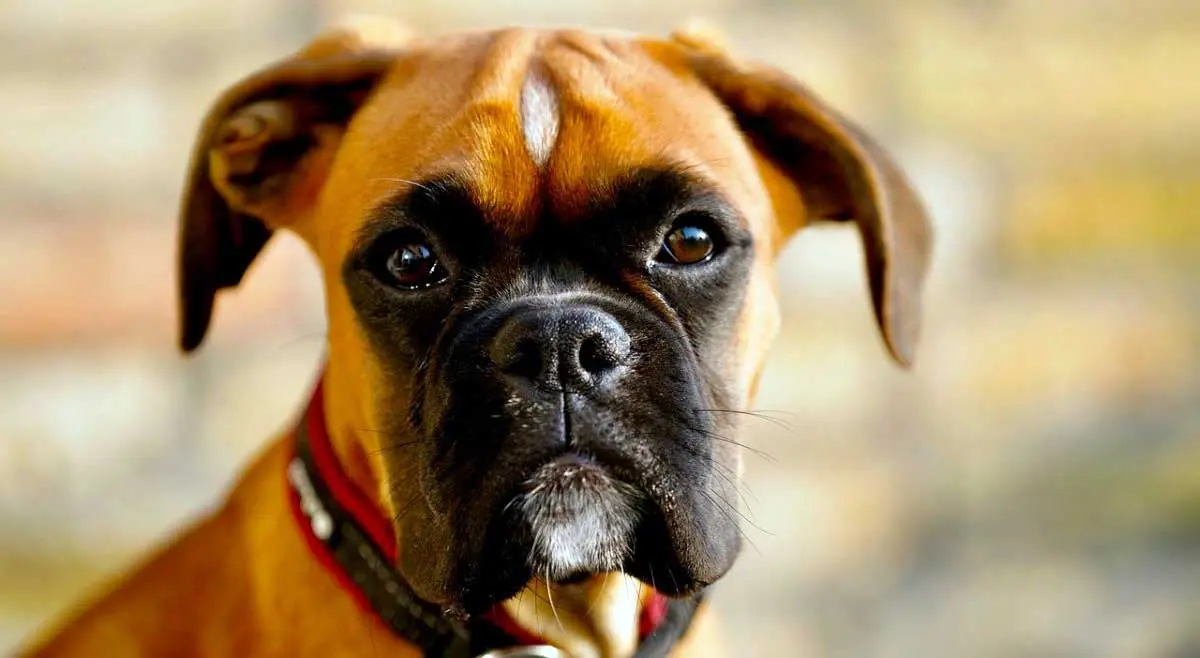
The Boxer may have origins as far back as 2000 BC when a dog with a powerful build and heavy head was described by ancient Assyrians. This dog was once again mentioned later in what is now Albania. Then, they were called Molossians. As these dogs spread across the European continent, they found their way to Germany where they became the ancestors of the Bullenbeissers.
This now-extinct dog breed is the ancestor of the current Boxer. Selective breeding led to what we now know as the Boxer. Boxers quickly became popular in Europe, but it wasn’t until after World War I that they made their way to the United States.
Today, Boxers are the 16th most popular dog breed, according to the American Kennel Club (AKC).
Boxers Have a Unique Appearance
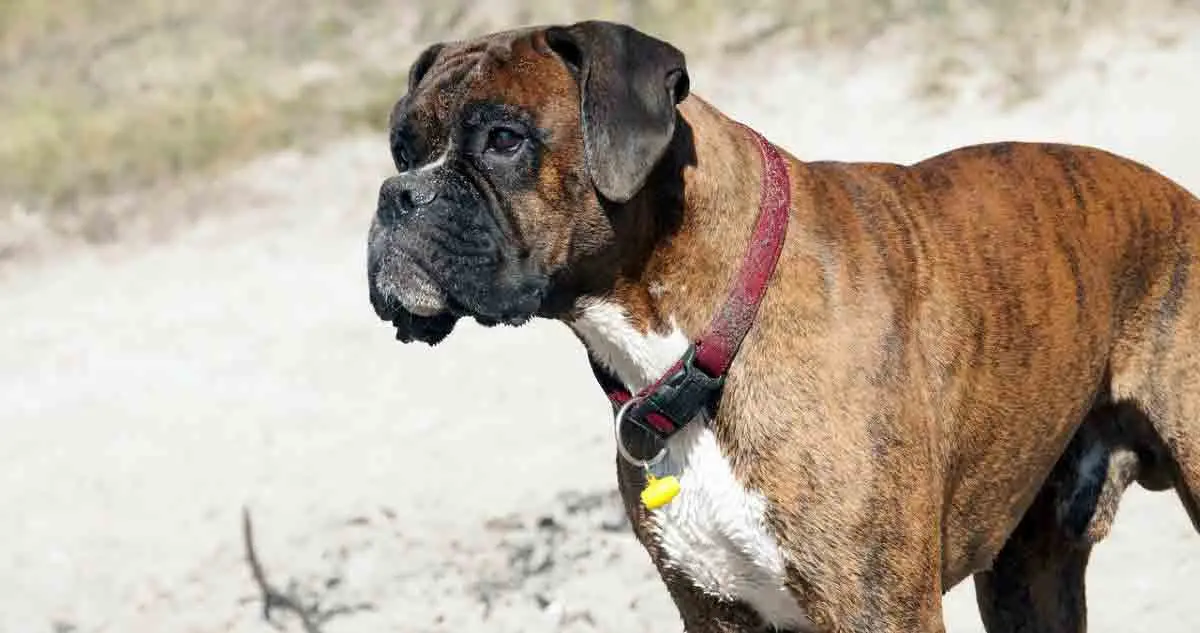
According to the AKC, a Boxer is a 21-25-inch-tall dog that weighs around 65-80 pounds. This popular dog breed has a short, shiny, smooth brindle or fawn-colored coat. They often have white markings on their chests, neck, and paws. They also have black masks.
These medium-sized dogs often have docked tails, and their ears are cropped to look pointed. They also have square heads with intelligent and alert, dark brown eyes. Their lower jaws often protrude out more than their top lips. They have a brachycephalic face that can cause excessive drooling. Yet, Boxers are more active than their flat-faced counterparts (pugs don’t need a lot of exercise; Boxers do).
These dogs are muscular and sleek with powerful forepaws that harken back to their bull-baiting days.
Boxers Are Friendly, High-Energy Dogs

Intelligent, playful, and high energy—it is important to give these dogs plenty of exercise every day. A bored Boxer may turn to destructive behaviors, like chewing on shoes and even drywall. Without stimulation, they may also display some common behavioral problems, such as excessive barking.
Boxers are ideal pets for children because they are patient but alert. According to Britannica, they may be a little too boisterous for seniors–– although, each dog is different. They are also curious dogs who love to have things to do. They have been a popular dog breed for many years because of their active, fun-loving nature.
They get along with other dogs well and are open to strangers. They are easy to train, but they love their routines. They need plenty of mental stimulation to be happy. Puzzles, tasks, and exercise keep them from getting bored.
Where Did Other Dogs Get Their Names?

Several other dog breeds have interesting name origins. The Xoloitzcuintli dogs, for instance, were named for the Aztec god of fire and lightning. This god was called Xolotl. The word “itzcuintli” is the Aztec word for God. In central Mexico, the Aztecs depicted their god of death as a dog-headed creature, so this indigenous Mexican dog gained its name from this likeness.
Chow Chow is another dog with an interesting name origin. This compactly built dog with thick fur and a large head gets its name from the 19th-century term for East Asian cargo. Some argue that its name comes from the ancient Chinese word “chao,” which means “dog of strength.” Even others argue that “chow” is a slang term in Chinese meaning “edible.” This breed was once considered a food source.
The Norwegian Lundehund also has an interesting name origin. People bred these dogs to catch puffins, which had inaccessible nesting places in caves and on cliffs. Their name is the combination of “lunde,” the Norwegian word for puffin, and “hund,” which means hound.
Boxers Make Great Family Pets
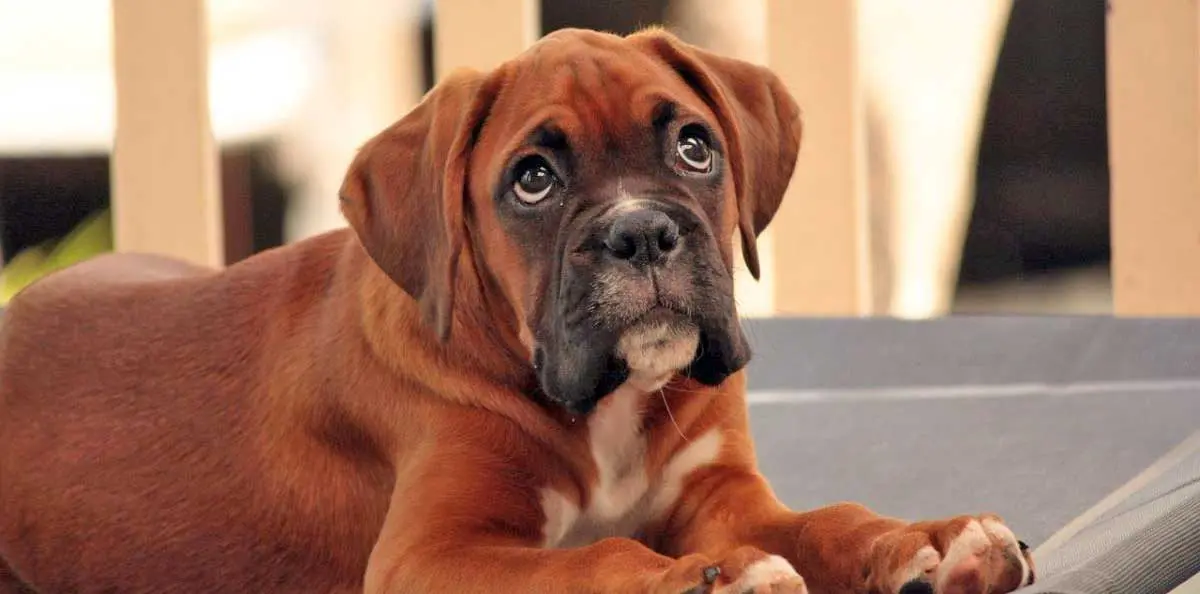
Boxers likely got their name from the slaughterhouses where they helped butchers control cattle. Yet, there are several other theories about how their name came to be. The truth is likely a mixture of these ideas. Boxers are beautiful, sleek, medium-sized dogs with deep brown eyes and playful, loving personalities. No matter how these dogs received their name, they make loving companions.
